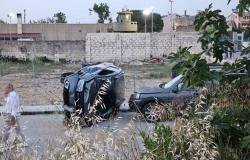The Asaps Research Office together with the Lorenzo Guarnieri Association, analyzed the proceeds of the 2023 fines and their use in the 14 Italian cities with more than 200,000 inhabitants. 583 million euros collected (+6% compared to 2022). The news is that only 11% of this money is due to speed camera fines, 11% which becomes 6% from Rome onwards. Therefore, in urban areas, speed cameras are certainly not the main source of cash for municipalities. There remain significant differences between cities ranging from 8.2 euros per inhabitant in Naples to 124.8 euros in Florence and the Italian average is 62.4. The use of these amounts by the Municipalities is important. Communication is not always transparent and the description is often very generic. Unfortunately, road safety education is Cinderella with only 89,238 euros, small change considering the total amount. The lion’s share of investments comes from road maintenance (97 million euros) and public lighting (41 million euros). 25% of the investments equal to 77 million euros and indicated as intended for road safety (legitimately from a legislative point of view) in reality do not have much to do with road safety, among these 19 million are intended for the payment of electricity it’s gas.
“There is the feeling – they explain from Asaps – that if there were no more fines because citizens respect the highway code we would have cities in the dark, municipal offices in the cold and without lights, roads without signs and with chasms and municipal police without uniforms and without a pension. Following our analysis, the idea prevails that there is no specific plan in the destination of the proceeds of the fines, supported by the data, that the destinations of the proceeds are all expenses that the administration owed to do anyway and which are assigned “a posteriori” to the category of improving road safety. Therefore, they are mostly non-discretionary expenses, already incurred “independently” of the revenues from fines. There is no vision or specific planning to actually improve road safety city streets in particular for vulnerable users: pedestrians and cyclists. And many of these interventions have little to do with road safety. In conclusion, by following the money, we understood that there would be money to improve the safety of citizens in our cities. Unfortunately, however, there is no political will for a real change of pace towards safer mobility, where one no longer has to die to move.”






